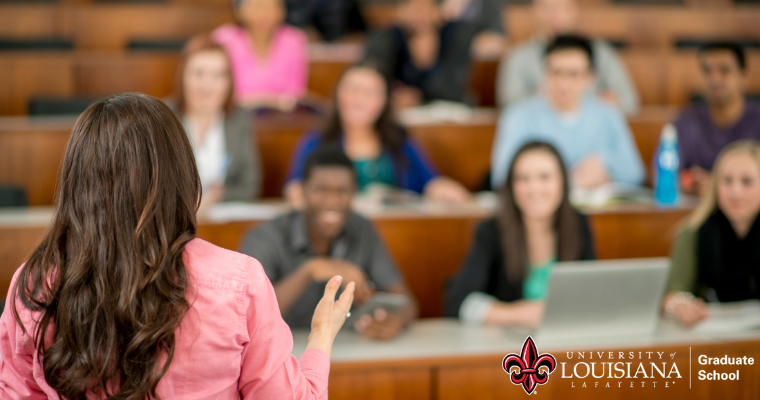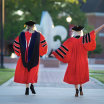Finding Our Footing in the Classroom: Lessons on Teaching and Engagement from Dr. Amanda Mayeaux

As graduate students, many of us step into teaching roles with little to no formal preparation. One day we’re knee-deep in our own coursework and research, and the next we’re suddenly responsible for leading a classroom. It’s a strange, sometimes intimidating shift—balancing our own learning while being expected to embody authority and expertise.
At the Fall 2025 Graduate Assistantship and Fellowship Orientation on August 21, Dr. Amanda Mayeaux gave a lively and humor-filled session called “Effective Teaching & Classroom Engagement for Graduate Students in Teaching Roles” on this balancing act: how graduate students can approach teaching with confidence, effectiveness, and authenticity. What stood out most was her reminder that teaching isn’t just about content delivery; it’s about building connections that make learning meaningful.
Dr. Mayeaux opened the session with a good ole’ icebreaker, but she reframed icebreakers as tools—not just for awkward introductions, but for building community between instructors and students and among students themselves. A connected classroom, she argued, is a classroom where real learning happens.
The icebreaker itself drove this point home when she asked us to think about our own most memorable teachers. What made them so impactful? For most of us, it wasn’t just the subject matter they taught but the way they made us feel—seen, believed in, and capable of more than we thought possible. She reminded us that our students need that same mix of belief and challenge: the reassurance that we’re on their side, paired with the expectation that they can rise to high standards.
Of course, building connection is only one part of the job. Dr. Mayeaux also touched on classroom management and assignments, and her advice was refreshingly practical: don’t cling to strategies that don’t work and don’t assign “busy work” just for the sake of having assignments. Both our time and our students’ time are valuable, and meaningful learning should always be the goal.
Professionalism, she emphasized, doesn’t have to mean being distant or rigid. In fact, the best teachers—the ones we remember—were often those who found ways to make a difference in our lives. Being approachable, adaptable, and invested in students’ growth is just as professional as mastering classroom policies or grading rubrics.
One of her strongest points, though, was aimed squarely at graduate students: we’re not just in grad school to earn a degree—we’re here to build a resume. That means cultivating the skills and experiences that will set us apart in the job market. Landing a teaching position in higher education isn’t about checking off a degree requirement; it’s about becoming the kind of teacher students remember, the kind who can actually make a difference.
Dr. Mayeaux’s session was both challenging and encouraging. Teaching as a graduate assistant may feel overwhelming at first, but it’s also an opportunity to grow into more than just a scholar. It’s a chance to practice the art of connection, to find our footing in the classroom, and to begin shaping the kind of educators we will become.
